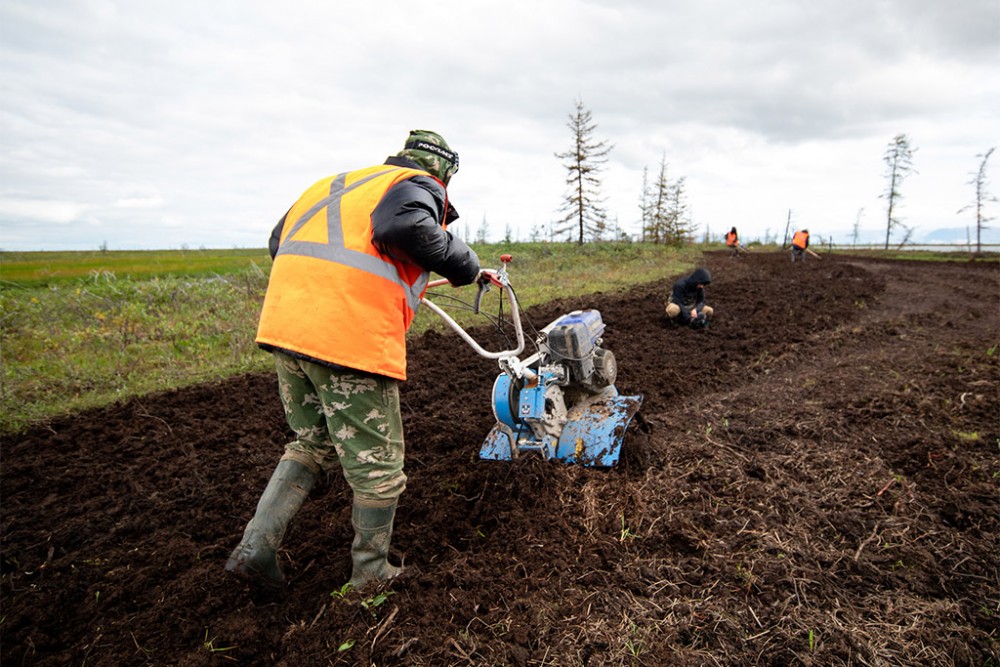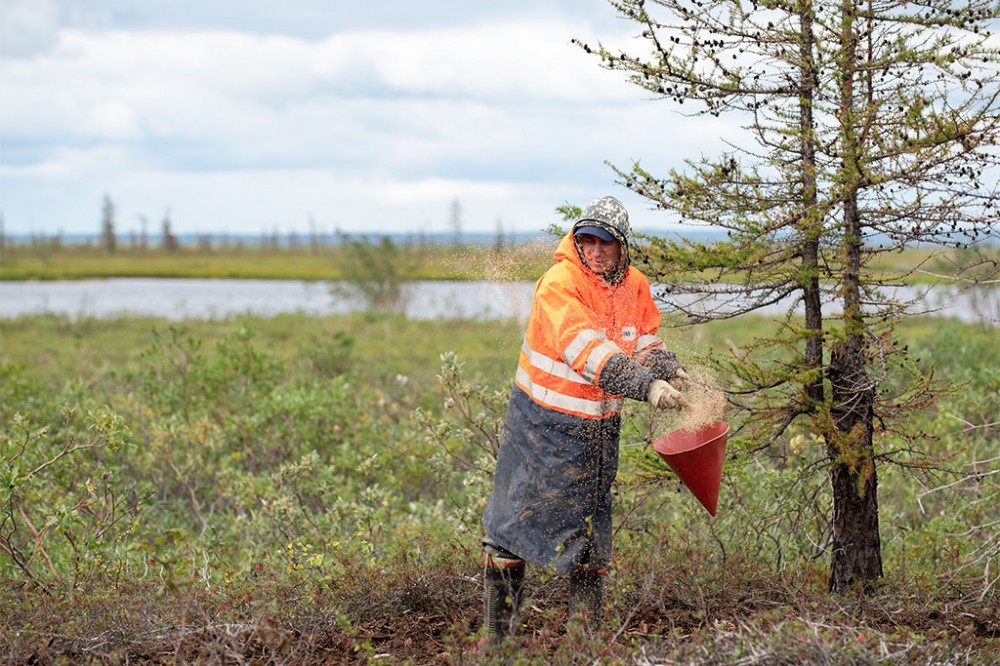Nornickel begins land reclamation of soil contaminated by oil leak
The land reclamation project will restore topsoil and plant seeds of Arctic plants.

A project to reclaim contaminated soil from the May 2020 fuel oil spill in Norilsk is now underway and expected to be completed within ten years.
On May 29, 2020, 21,000 tons of fuel leaked out of the Norilsk-Taymyr Energy Company’s thermal power plant in Norilsk. The support column in the basement of the power plant’s diesel storage tank sank, rupturing the tank and spilling fuel.
According to officials, the power plant was located in a fairly remote area and did not cause any damage to local communities. Nonetheless, the accident, which was quickly deemed a regional emergency, was highly damaging both to the environment and to the bottom line of Nornickel, the parent company of the Norilsk-Taymyr Energy Company.
After the accident, the Russian Federal Service for Supervision of Natural Resources (Rosprirodnadzor) filed a claim against the Norilsk-Taymyr Energy Company in the Arbitrazh Court of the Krasnoyarsk region. Rosprirodnadzor wanted financial compensation for the grand environmental damage the oil spill had caused, leading to the Russian court fining Nornickel for €1,62 billion(US $73.6 million).
[Russian court sentences Arctic city mayor to community service over fuel spill]
In early March 2021, the company announced they had paid off the fine for the “damage caused to the environment.” However, paying the fine is not the sole thing Nornickel has had to do in the aftermath of the Norilsk spill.
The mining and metallurgical giant will potentially spend a decade cleaning up the area.
After the accident, a jointly developed reclamation project was initiated by the Norilsk Taymir Energy Company and ANO Eccoterra. The project will implement gentle measures aimed at restoring the ecosystem based on currently available technologies. A main goal with the established land reclamation project is to restore the fertile layer of soil and the natural ecosystem in the region that was damaged during the spill, the company said in a statement.

According to an update published by Nornickel on August 24, the land reclamation project’s “active phase” is under way. A territory of up to 900,000 square meters will be sown with seeds of Arctic plants, such as meadow clover, meadow timothy and meadow fescue, native to the region to restore the land’s conditions to a level that meets Russian federal requirements.
[Technical issues, not permafrost, to blame for Arctic fuel spill, says Russian environment watchdog]
Another part of the cleanup project is removing 467 abandoned buildings and structures, over 1.3 million tons of industrial waste, 2 million tons of garbage, and about 600,000 tons of scrap metal.
When commenting on this additional initiative, Stanislav Seleznev, Nornickel’s vice president for environment protection and industrial safety, explained why the company is planning to go beyond simply cleaning up the direct effects of the accident.
“Our environmental program is aimed at protecting land resources, air, water bodies, preserving biodiversity, increasing waste recycling and reusing,” he said in the statement.
According to Nornickel, already over 200,000 square meters have been plowed, 55,000 square meters of peat has been integrated into the area to reestablish a fertile soil layer, and 70,000 square meters of soil have already been sown with seeds.
Nornickel also claims to have removed contaminated soil from the spill area using bulldozers and excavators in 2020 and 2021. This contaminated soil was then transported to special accumulation sites for further disposal using microbiology remediation, which was approved by a state environmental inspection.